Contents
Guide
I WONDER
AS I WANDER
AN AUTOBIOGRAPHICAL JOURNEY
INTRODUCTION BY ARNOLD RAMPERSAD
by LANGSTON HUGHES
AMERICAN CENTURY SERIES
 HILL AND WANG N EW Y ORK
HILL AND WANG N EW Y ORK
A DIVISION OF F ARRAR , S TRAUS AND G IROUX
The author and publisher have provided this e-book to you for your personal use only. You may not make this e-book publicly available in any way. Copyright infringement is against the law. If you believe the copy of this e-book you are reading infringes on the authors copyright, please notify the publisher at: http://us.macmillanusa.com/piracy.
TO ARTHUR AND MARION SPINGARN
LANGSTON HUGHES was clearly in a buoyant mood when at four oclock on Saturday, July 17, 1954, he sat down in his study at home in Harlem to begin writing his second volume of autobiography, I Wonder as I Wander (1956). In that first stint, Hughes wrote thirty pages. I hope it reads, he wrote a friend about the new book, as easily as it writes. At that point, he had in mind a manuscript of no more than three hundred pages. With fat margins added in the final typewriting, the manuscript would then run to about four hundred pageswhich is just about a book.
In the end, however, I Wonder as I Wander turned out to be twice as long, even though it covered far fewer years (1931 to New Years Day, 1938) than Hughes had originally projected. By this time he was a veteran writer, but the volume of autobiography presented challenges and opportunities that Hughes had not quite anticipated. These challenges and opportunities finally asserted themselves as he moved deeper into the book.
I Wonder as I Wander continues a story started by Hughes in his first book of autobiography, The Big Sea (1940). Although he had written most of The Big Sea in 1939, it ends early in 1931. The urge to continue telling the story of his remarkable life must have been quite strong. But the tepid sales of the earlier book (about 2,500 in the first year), despite favorable reviews, had discouraged him from starting work on another volume. However, over the years Hughes had considered it inevitable that he would one day write another volume of his life story. Finally, in 1954, a generous offer from a publisher, following a burst of publicity, moved him to resume this task.
The Big Sea offers a thoroughly genial, sometimes moving account of Hughess life from his birth in Joplin, Missouri, where he lived for only a year or two before his mother took him to Lawrence, Kansas, where her family had been for many years. There, Langston grew up in the painful absence of his father, who had left his family and the United States for Mexico after becoming disheartened by racism and segregation. Langston also endured the frequent absences of his mother, an aspiring actress who often traveled in search of work. He spent his boyhood mainly with his aged maternal grandmother in a state close to poverty. In The Big Sea, he wrote frankly of his extreme loneliness growing up under these conditions, and of the discovery of books, and the wonderful world in bookswhere if people suffered, they suffered in beautiful language, not in monosyllables, as we did in Kansas. Books saved him and gave him the first glimpse of his future career.
Following his grandmothers death in 1915, and during one year (19151916) in Lincoln, Illinois, with his mother and her new husband, Langston wrote his first poem. Between 1916 and 1920 he lived in Cleveland, Ohio, where he attended Central High School. Here, in a cosmopolitan, disciplined academic environment, with often talented classmatesmany of them the children of immigrants from EuropeHughes had starred as an athlete and a writer. He published stories and poems in the monthly school magazine and was eventually elected Class Poet and editor of the Annual. Most important, by graduation, Hughes had tentatively committed himself to becoming a writerand to writing mainly about the black American experience.
In 1921, after a year in Mexico with his father, he entered Columbia University in New York City. One year later, estranged from his father, who hated his sons desire to be a writer, Hughes withdrew from the university. In the next four years he worked in a variety of humble jobs that nevertheless broadened and deepened his experience of the world. He was, variously, a delivery boy for a florist, a farm worker, and a messman on ships anchored up the Hudson River, up and down the west coast of Africa, and to and from Europe. Having jumped ship in Rotterdam in 1924, he made his way to Paris, where he worked as a dishwasher in a night club run by an American and staffed mainly by Americans, including jazz musicians. In Washington, D.C., in 1925, his jobs included being an office helper for Carter G. Woodson, the historian responsible for founding Negro History Week and the Association for the Study of Negro Life and Culture.
In all his odd jobs Hughes never lost sight of his literary goals. Steadily he wrote and published poems, notably in W.E.B. Du Boiss Crisis magazine (the official organ of the National Association for the Advancement of Colored People). In May 1925, when he won first prize in a poetry contest organized by a rival magazine, he was ready for a major step in his career. Aided by the influential white writer Carl Van Vechten, he saw his first book, the collection of verse The Weary Blues, published the following year, 1926, by Alfred A. Knopf. The book appeared to generally admiring reviews in the national press as well as in black newspapers and magazines. In 1927, his second collection, Fine Clothes to the Jew, was widely attacked in the black press for its bold depiction of lower-class African-American life, but its novel use of jazz and blues influences sealed Hughess reputation as the most creative and original poet of the Harlem Renaissance.
In 1926, Hughes entered Lincoln University in Pennsylvania, at that time one of the most prestigious black colleges in the United States. In 1929, he was awarded a bachelors degree. These years were equally important for the ripening of his relationship with the most important patron of his life, Charlotte Mason, a wealthy, elderly white woman. An enthusiastic believer in parapsychology and the power of folkways, Mrs. Mason (or Godmother, as she preferred to be called by the various artists she helped) was a volatile force who exerted enormous influence on Hughes. Generously funding his efforts, she also showered him with praise and displays of affection, as well as advice about his career as a writer. The main artistic result of their friendship was his touching novel Not Without Laughter (1930), about a black boy growing up in Kansas. Surrendering to her power, Hughes became devoted to Mrs. Mason. Thus, when Godmother suddenly and violently broke with him in 1930, for reasons that remain largely shrouded in mystery, the effect on him was devastating. Heartbroken, Langston made many efforts to restore the relationship, but to no avail. This experience with the capriciousness of philanthropy, as well as the onset of the Depression in the United States, set him firmly on the radical political path as the 1930s opened.
At this point, The Big Sea ends. Describing the radical political path he followed in the next few years was the main challenge of I Wonder as I Wander. This leftward path took him first, in 1931 and 1932, on a tour of the South and the West. Traveling with a companion in a car purchased for the trip, and reading almost exclusively in black churches and schools, Hughes tested his verse on the audience he loved most of allblacks struggling to rise in spite of the bonds of poverty and segregation in some of the most repressive states in the Union. Then, in June 1932, he sailed to the Soviet Union. He went there in a band of twenty-two young blacks invited to take part in a planned motion picture about race relations in the United States. When the plan collapsed, Hughes stayed on; he spent a year in the Soviet Union. In 1933 and 1934, he passed another year in Carmel, California, writing under the patronage of a wealthy Californian who (unlike Godmother) carefully placed no strain on their friendship or on Hughess art. After some months in Mexico, to which he had gone in 1934 following his fathers death there, he returned to the United States. With his income now just about dried up, he joined his mother in Oberlin, Ohio, where she was then living in poverty, dependent on relatives there. After going to New York for the Broadway opening of one of his plays, Hughes spent some time in the city he would eventually call home. Still later in the decade he lived for a few exciting months in Spain as a newspaper correspondent during the Spanish Civil War. It is at this point, with Hughes still in Europe but about to return to the United States, that

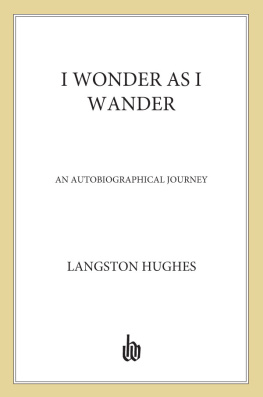
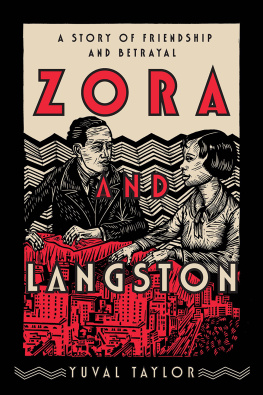


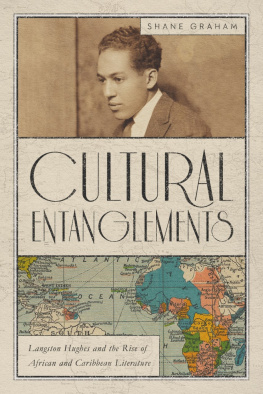
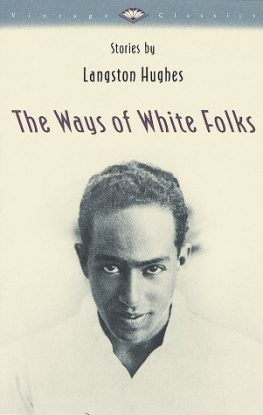

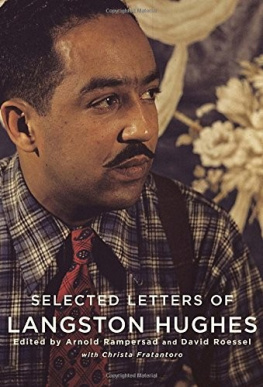


 HILL AND WANG N EW Y ORK
HILL AND WANG N EW Y ORK